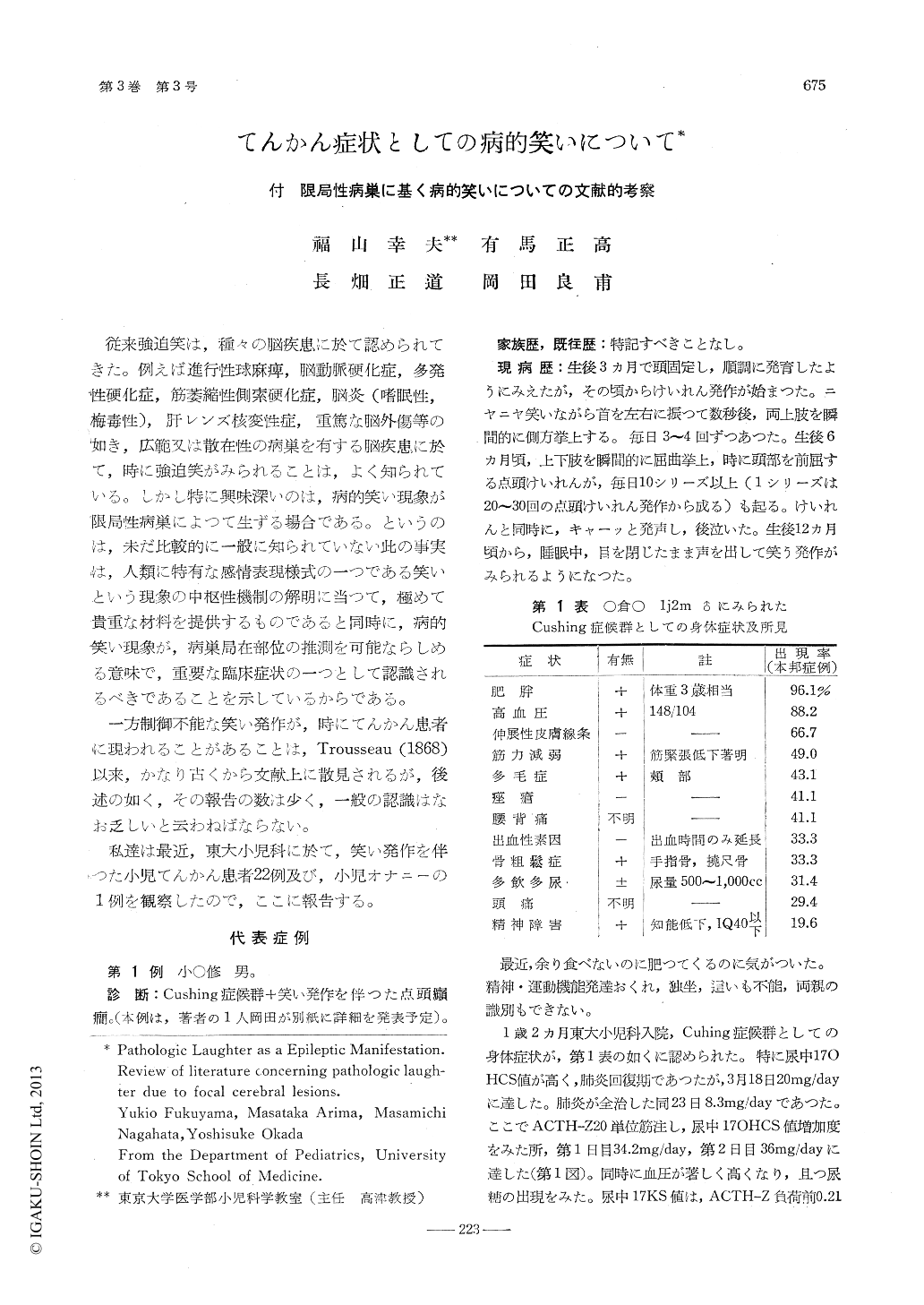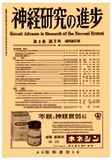Japanese
English
- 有料閲覧
- Abstract 文献概要
- 1ページ目 Look Inside
従来強迫笑は,種々の脳疾患に於て認められてきた。例えば進行性球麻痺,脳動脈硬化症,多発性硬化症,筋萎縮性側索硬化症,脳炎(嗜眠性,梅毒性),肝レンズ核変性症,重篤な脳外傷等の如き,広範又は散在性の病巣を有する脳疾患に於て,時に強迫笑がみられることは,よく知られている。しかし特に興味深いのは,病的笑い現象が限局性病巣によつて生ずる場合である。というのは,未だ比較的に一般に知られていない此の事実は,人類に特有な感情表現様式の一つである笑いという現象の中枢性機制の解明に当つて,極めて貴重な材料を提供するものであると同時に,病的笑い現象が,病巣局在部位の推測を可能ならしめる意味で,重要な臨床症状の一つとして認識されるべきであることを示しているからである。
一方制御不能な笑い発作が,時にてんかん患者に現われることがあることは,Trousseau(1868)以来,かなり古くから丈献上に散見されるが,後述の如く,その報告の数は少く,一般の認識はなお乏しいと云わねばならない。
The author presented 22 cases of epileptic chi-ldren whose attacks were accompanied by abnor-mal laughter or smile expression. The epilepticnature of laughter was suspected by the follow-ing reasons.
(1) Its onset was abrupt and involuntary,and frequently accompanied by convulsive seizu-res.
(2) The patient was unconscious and amne-stic about his laughter spells.
(3) The anticonvulsants might be effectivefor the control of laughter as well as convulsiveseizures.
The clinical type of epilepsies which was fre-quently accompanied by laughter was the massivemyoclonic seizure of infancy (68%).
The extensive review of literature revealedthat the hypothalamus, especially the posteriorpart of it, is important for the production andcontrol of laughter movement. But in some ca-ses, the focal lesions were found in the pons,crus cerebri, capsula interna, temporal or frontalcortex, and especially the rhinencephalon.

Copyright © 1959, Igaku-Shoin Ltd. All rights reserved.


